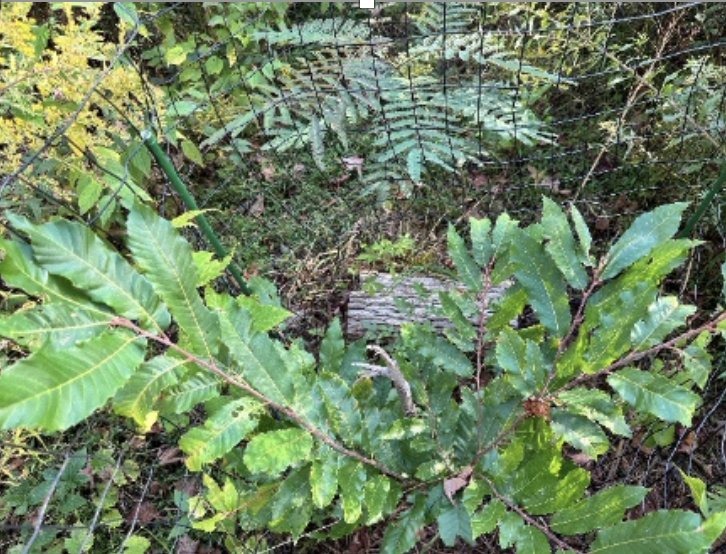American Chestnut Trees Planted In Hall Preserve
An opportunity arose to plant trees in the Hall Preserve, an 8-acre mostly wooded parcel on Downs Road. Working closely with neighbors who abut the parcel, several blight-resistant American chestnut trees (Castanea dentata) were planted. The specimens were purchased from a local nursery and positioned in spots chosen to provide ample opportunity to thrive. The saplings were surrounded with wire fencing for protection from foraging animals. Currently, two of saplings are doing well.
The story of the American chestnut and its relationship with humans is a tale of bounty, tragedy, and ultimately, of hope and redemption. Once dominating portions of the eastern U.S. forests, the American chestnut numbered nearly four billion trees and was among the largest, tallest, and fastest-growing in these forests.

The nuts provided an abundant food source, and Indigenous Peoples responded in kind by managing the landscape to improve habitat for chestnuts. Humans benefitted not only from the chestnuts themselves, but from the immense opportunities they created for wildlife. European settlers learned that chestnut wood was rot-resistant, straight-grained, and suitable for furniture, fencing, and building materials.
The chestnut blight, a fungus introduced to the U.S. in the late 1800’s, has decimated the American chestnut population. Those trees that sprout from stumps will grow for a few years but eventually succumb to the blight. Organizations such as the American Chestnut Foundation are working to develop a blight-resistant American chestnut tree through scientific research and breeding, and to restore the tree to its native range in the eastern United States.
Let’s hope those the Land Trust has planted can be part of that resurgence.
